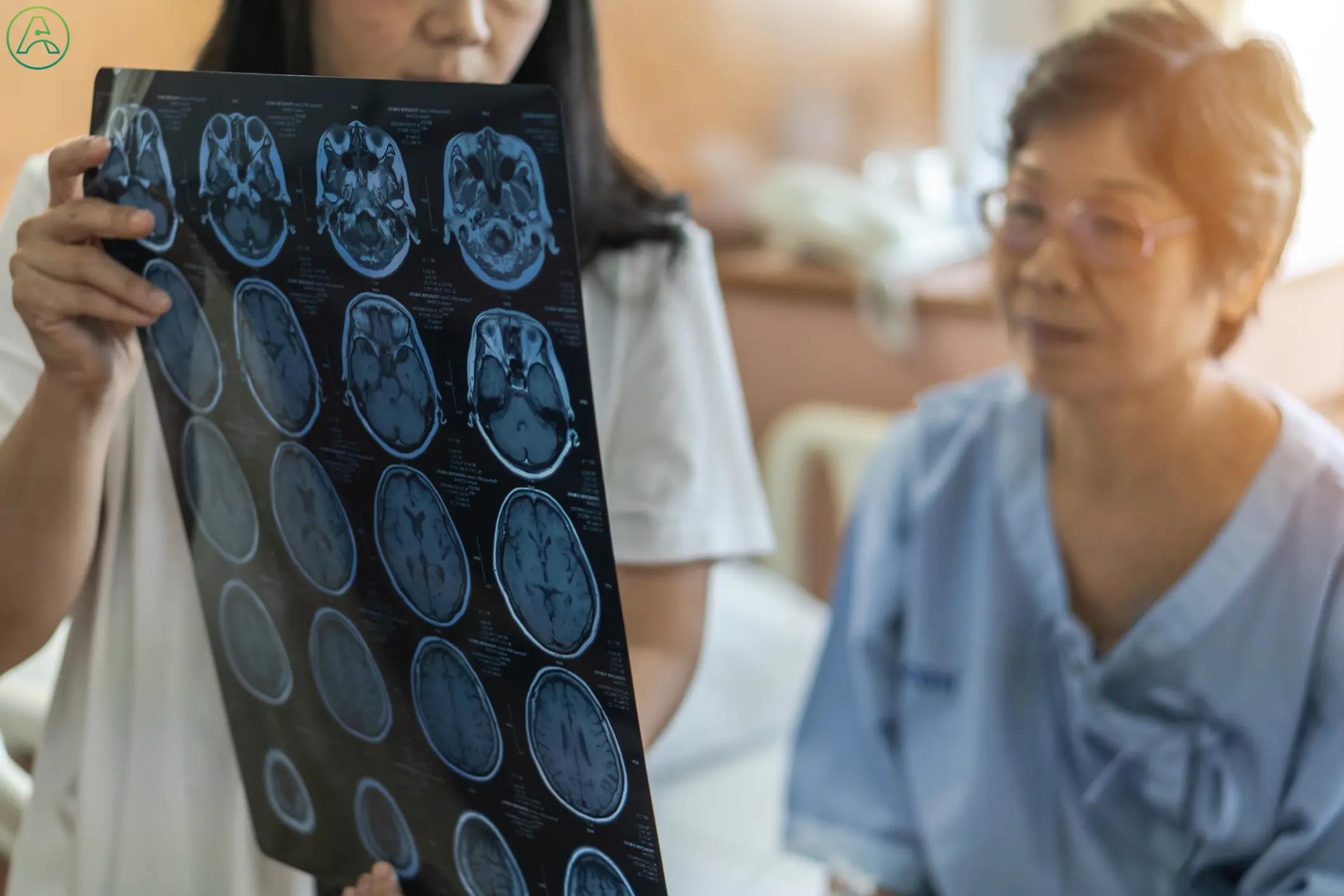Someone has a stroke every 40 seconds, and every four minutes, one of those strokes is fatal. The recovery journey after a stroke is a long one: many people who have had a stroke need to relearn things like talking, walking, and eating, and some develop permanent disabilities. The best thing you can do is to start the recovery process as soon as possible with a care team you trust.
If you or a loved one has recently had a stroke, this article will address your most pressing questions about recovery, including:
How do I find a specialist who helps with stroke treatment?
What are the long-term challenges associated with strokes?
How can family members and friends support their loved one who has had a stroke?
What technology is available to help with the day-to-day challenges of life after a stroke?
What treatments are available for an ischemic stroke or transient ischemic attack (TIA)?
What treatments are available for a hemorrhagic stroke?
If a family member had a stroke, should other family members see a doctor?
Where can I get more information about strokes?
How do I find a specialist who helps with stroke treatment?
A good place to start for specialist referrals is with the hospital that treated the stroke. Many hospitals keep lists of reputable specialists for this exact reason. Your primary care physician (PCP) or family doctor is also an excellent resource and can make provider recommendations based on your medical history and individualized needs.
Ability Central offers a national database of non-profit organizations supporting people with disabilities that arise from a stroke. The Service Locator tool allows you to search a wide range of service types, including government programs; social or legal assistance; and medical supplies, professionals, and services.
What are the long-term challenges associated with strokes?
Of the 15 million people around the world who are affected by stroke each year, it is estimated that 50% will live with permanent or chronic disability. These disabilities may include:
Paralysis or weakness
Aphasia, difficulty with either language or speech
Dysphagia, difficulty swallowing
Sensory problems
Physical or mental fatigue
Anxiety and depression
Dysarthria, difficulty speaking due to weakened muscles
Dexterity issues
Speech problems like muteness, stuttering, or apraxia
Whether temporary or permanent, these effects can impact a return to normalcy for someone who has had a stroke. The severity of these effects determines whether someone can return to work, travel, or care for themselves the way they used to.
These effects can also impact communication. Many stroke survivors must relearn how to speak, and some develop permanent speech disorders or impediments. Weakness or paralysis following a stroke can make it difficult to write, text, or use computers and phones.
Because of this, post-stroke recovery is often isolating and frustrating, especially if the associated disabilities turn out to be permanent. For more information, see Long-term Care Challenges After a Stroke.
How can family members and friends support their loved one who has had a stroke?
The road to stroke recovery is a long one. Between doctors’ appointments, physical health, and the mental and social impacts of a stroke, the sudden changes associated with a stroke can be extremely overwhelming.
People recovering from a stroke need the support of their friends and family. Here are just a few ways to offer that support:
Stay connected with regular messages and phone calls, not just to ask about their recovery but to make sure they know you’re there for them.
Offer practical support, like driving to appointments or helping with household chores.
Support their lifestyle changes. Such changes will likely include a healthy diet, exercise, taking medications as prescribed, and more frequent doctor visits.
Monitor changes in attitude or behavior. As many as 30-50% of people affected by stroke develop post-stroke depression or other mental health issues.
Connect with support groups for people who have experienced a stroke as well as their families. See Long-term Care Challenges After a Stroke for more information.
What technology is available to help with the day-to-day challenges of life after a stroke?
Technology can often help people who have had strokes recover faster. Wearable smart devices, smartphones, tablets, and other assistive technology help with communication, while apps may help improve memory and thinking.
Similarly, technology can assist people whose strokes lead to permanent disability. These might include speech-to-text programs, communication boards, or mobility tools like motorized wheelchairs.
Ability Central maintains a large database of mobile devices that can be customized to aid stroke patients in their recovery.
What treatments are available for an ischemic stroke or transient ischemic attack (TIA)?
Treatment for an ischemic stroke or transient ischemic attack (TIA) may include:
Tissue plasminogen activator (tPA), a medication injected into the veins in the arm to break up the blood clots that block blood flow to the brain.
Thrombectomy, a medical procedure that removes the clot from the blood vessel.
Carotid endarterectomy, surgery to remove plaque from the neck’s carotid artery if the stroke was caused by carotid artery disease.
After release from the hospital, people who have had an ischemic stroke might need new medications, changes to diet and exercise, and physical therapy.
What treatments are available for a hemorrhagic stroke?
Blood pressure medication may be used to lower the pressure and the strain on blood vessels in the brain after a hemorrhagic stroke. In addition, medical procedures may include:
Aneurysm clipping.
Blood transfusions.
Coil embolization blocks blood flow to seal an aneurysm.
Draining excess fluid in the brain.
Temporarily removing part of the skull if you have a lot of swelling.
Radiation treatment to remove or reduce an arteriovenous malformation (AVM).
Like ischemic strokes, hemorrhagic strokes might require lifestyle changes, medications, or certain therapies to aid recovery. Typically, these treatments focus on lowering blood pressure and improving circulation.
If a family member had a stroke, should other family members see a doctor?
Several genetic disorders can cause a stroke. People with a family history of stroke are also likely to share common risk factors, including lifestyle choices, high blood pressure, and diabetes. If someone in your family has recently had a stroke, it’s important to speak to your doctor about your potential risk factors. You should also schedule regular checkups to keep an eye on blood pressure, blood sugar, and other indicators of stroke risk.
To learn more about the risk factors of a stroke, see Seven Tips to Recognize and Prevent a Stroke.
Where can I get more information about strokes?
Ability Central offers a series of articles about strokes. See:



